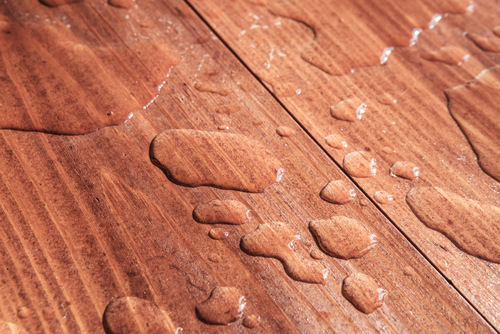How to Look After Your Hardwood Worktop

Solid wood worktops add a natural beauty to your kitchen which is hard to beat. Not only is it an eco-friendly option, but it also improves with time, adding character to the heart of your home as it matures. It looks stunning, you can sand out marks and imperfections, and it’s even hygienic as wood contains natural antibacterial properties.
However, to make sure you get the longest life and best appearance from your worktop, it will take some effort on your part. The attention your worktop requires really is minimal, but the payoff will be huge.
Firstly, some top tips to keep your surface looking glossy and new:
- Always mop up spills of water and other liquids straight away as the finish will be water resistant, not waterproof. Be particularly vigilant around the sink area and always dry off the surface after you have used the sink.
- Always stand hot, dirty or rough pans on a trivet or pan stand. If you leave iron or steel in contact with the surface for along period of time the timber can begin to stain as the natural chemicals in the wood begin to react with the metal.
- Always use cutting boards to chop food rather than cutting directly on to the surface so as to avoid marking and scratching the worktop or damaging the seal of the finish. Top up the oil finish regularly. You can't over-do this and it will keep your surface looking fresh and it's seal water-resistant.
Types of oil
- Tung oil comes from a tree found in China and Africa and some South American countries.
- Linseed oil is extracted from the seeds of the flax plant by steaming and crushing them. Raw linseed oil is boiled to remove impurities and helps to make the oil dry faster.
- Danish oil is simply a mix of of various oils such as tung and linseed Oil with some additives to assist drying.
- Teak oil is a mixture of various oils extracted from vegetables and has nothing to do with the wood teak.
When to oil your worktop:
A new worktop will need two initial coatings of oil, including the edges and underside which cannot be seen (this balanced application will help to keep the worktop from warping and bowing). You can apply up to 5 light coats to the top and front (with perhaps a light sanding in between) until you reach a tone you are happy with. You should re-oil at regular intervals, once every three to six months ideally, depending on usage. If you are unsure whether your worktop is ready for a top-up, a good test is to check it's waterproofing. With a good coating and seal any spilt liquids should 'bead' and run off easily. When this beading effect diminishes and water begins to lie flat on the surface then it's time to apply another coat.How to oil your worktop:
Ensure the worktop is clean using a cloth and warm soapy water. Once it's dry, pour a little of the oil directly onto the worktop and begin to spread in the direction of the grain using a lint free cotton cloth (a pad made from an old clean t-shirt will do the job nicely). The oil should be applied evenly, creating a thin film across the surface. Once you have applied the oil you might find that some patches look wet. Don't panic! This is simply here the oil has sunk into some parts more quickly than others. Leave the oil to settle for ten minutes and then, with the same cloth but without adding any more oil, go over the entire surface again. This will help to ensure an even coating and the finish should look the same across the whole length of the surface. It might feel slightly oily to the touch but shouldn't be swimming in oil, and within a few hours the first coat should be dry. Any further coats will take longer and may need up to eight hours or more to dry thoroughly. A well maintained worktop will look great for many, many years, but should it begin to show wear and tear it can be very easily brought back up to top quality. A good soapywater clean and oil treatment will renew your surface's shine and freshness, but if it is more seriously damaged (burned by a hot pan) or scratched, sanding it down with fine sandpaper and re-oiling will have it looking as good as new. Be patient, and don't be tempted to apply a really thick coat of oil, several thin coats will be much more effective.
March 26, 2014

